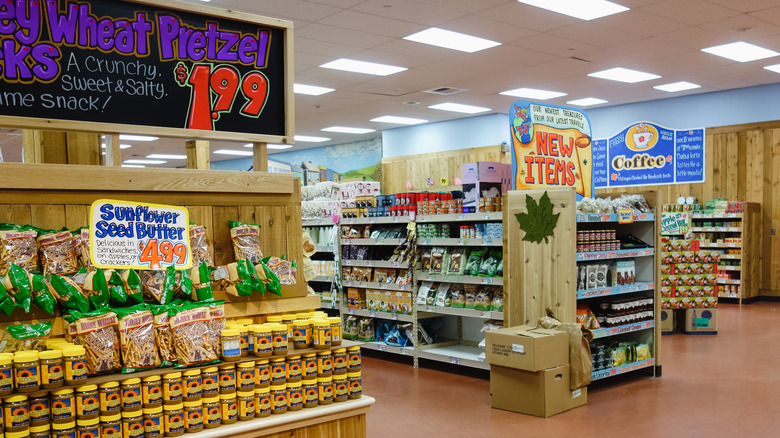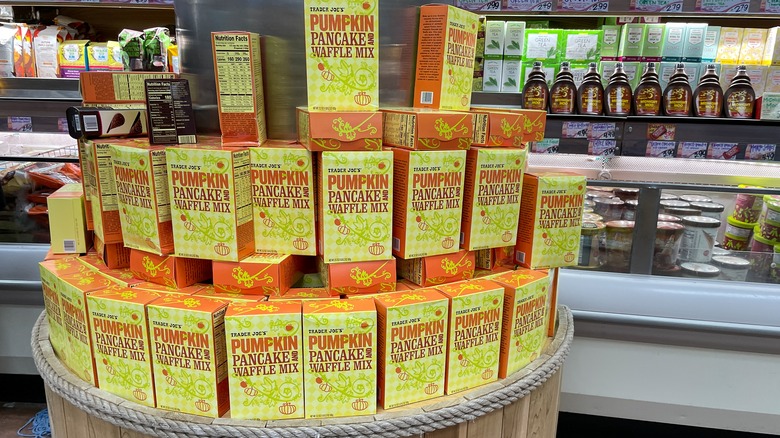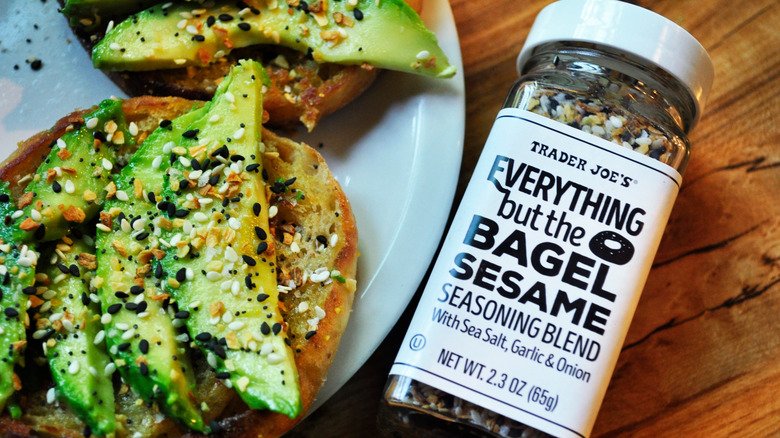The Real Reason Trader Joe's Frequently Discontinues Items
Trader Joe's aficionados get pretty attached to their favorite food items, especially ones unavailable at other grocery outlets. Aside from standard pantry, fridge, and freezer staples, TJ's goes out of its way to procure eclectic international dishes and quirky iterations of American favorites (hello, Hatch Chile Mac & Cheese). They also tend to carry healthier or more affordable mainstream items, explains Real Simple, leading to disappointment when customer-favorite items are temporarily missing-in-action or discontinued altogether.
So why would a grocery chain remove even wildly popular items from its inventory? That's exactly where a large portion of the answer lies — in inventory control. But there's even more to the web of product magic spun by Trader Joe's procurement, tasting, and marketing teams. Throw in local specialties, seasonality, and freshness factors, and the bigger picture emerges. Here's a look at why some of your favorite TJ foods ebb and flow through the supply chain — or ride off into the sunset, never to return.
New products and seasonal offerings
Providing the best products at affordable prices while filling relatively small store spaces means efficiently managing square footage, explains Trader Joe's. Every item must earn its keep. According to Eat This, Not That!, a common Trader Joe's retail store stocked roughly 4,000 products in 2021, compared to 50,000 for a typical supermarket — meaning that only proven items stick around for the long term. A stringent tasting panel and exacting standards determine what ends up on dinner tables across America, according to the company. And the same goes for when items vanish. Trader Joe's introduces shoppers to new offerings every week, essentially bumping underperforming items off shelves and out of cooler or freezer bins.
About 85% of store items are part of the Trader Joe's private label, according to Domino, so the constant experimentation produces consistent rotations of innovative, sometimes quirky, foods. Also, some items came to TJ's via a limited-supply agreement, and they're simply not available once those supplies dwindle, states the company.
Many beloved items come and go based on the season. From summer watermelons to autumn pumpkins or whole Brussels sprouts stalks, produce is particularly vulnerable to seasonal availability. Other products earn their spots based on seasonal use, such as dill pickle mustard just in time for summer hot-dog grilling and sparkling pineapple flavored water for picnics, notes People. Winter treats parade through stores during major holiday periods, including holiday vegetable hash, peppermint bark, and cranberry chevre, according to Insider.
Cost and regional preference
Cost also plays a big role in whether a product lands on the "discontinued" list. Since Trader Joe's is well known for keeping prices low for its array of fresh, interesting foods, the value factor contributes to some items losing their spots. When the cost of producing an item increases dues to supply-chain issues, increased manufacturing costs, or market values for ingredients, it can make that item lose value and become unfeasible for shoppers, per Trader Joe's.
A word of caution — don't count on finding your favorite TJ foods at all store locations. Trader Joe's has 557 U.S. grocery venues in its tight-knit family as of mid-June, 2022, according to ScapeHero. But when visiting grandma in Tennessee or vacationing in New York City, some products will be different. That's because the company pays attention to local food customs while also sourcing freshly prepared store items from nearby suppliers. Prices may vary as well, based on factors such as distribution costs, state laws, and taxes, explains the company website. It must all add up to value for the buyer.
At TJ's, it all boils down to timing, product availability, value, high standards, and, especially, innovative eating. CNN notes a summary of founder Joe Coulombe, saying that the original Trader Joe pulled from his belief that food is all about exploration, travel, and adventure.


